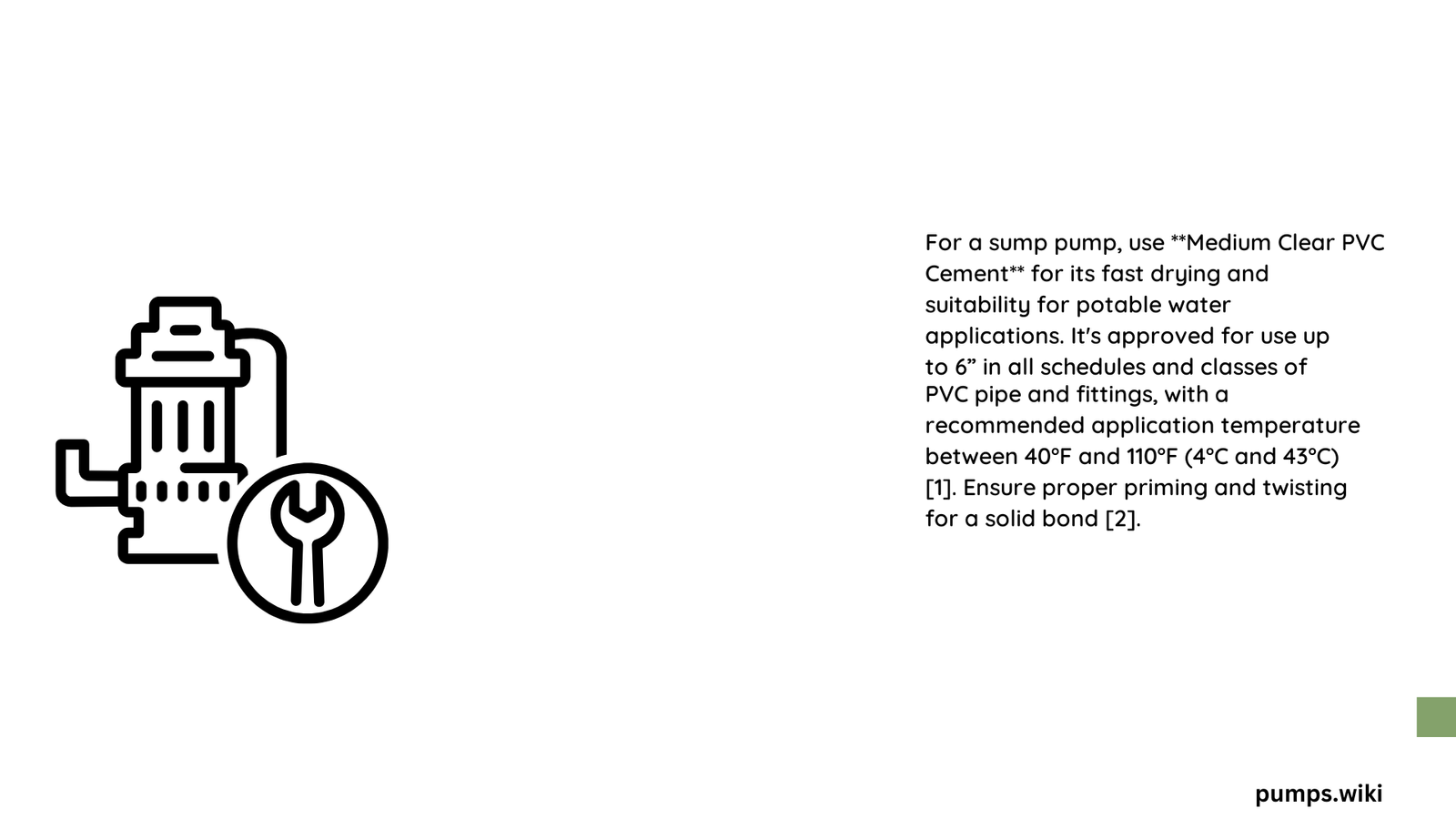PVC cement is a critical component in creating robust, watertight connections for sump pump systems. Homeowners and professionals rely on specialized solvent cements to ensure reliable pipe joints that can withstand constant water pressure and prevent potential leaks. Understanding the nuanced application techniques, cement types, and best practices is essential for successful sump pump installations and repairs.
What Are the Different Types of PVC Cement for Sump Pump?
Medium Clear PVC Cement
- Best For: Potable water and pressure pipe applications
- Pipe Diameter: Up to 6 inches
- Temperature Range: 40°F – 110°F
- Drying Time: 15-30 minutes
Heavy Duty Clear PVC Cement
- Best For: Large commercial and pressure applications
- Pipe Diameter: Up to 12 inches (pressure), 18 inches (non-pressure)
- Temperature Range: 40°F – 110°F
- Drying Time: 30-60 minutes
Hot Medium Blue Lava PVC Cement
- Best For: Emergency repairs and underwater connections
- Applications: Pool, spa, irrigation, sewer systems
- Drying Time: Extremely fast (few minutes)
How to Prepare PVC Pipes for Cement Application?

Surface Preparation Checklist
- Measure pipe length accurately
- Use precise cutting tools
- Deburr pipe edges
- Clean pipe surfaces thoroughly
- Ensure dry working environment
What Are the Step-by-Step PVC Cement Application Techniques?
Detailed Application Process
- Priming Stage
- Apply primer to pipe interior and exterior
- Cover entire bonding surface
-
Allow brief drying time
-
Cement Application
- Apply cement over primed areas
- Use consistent, even strokes
-
Work quickly before cement sets
-
Joining Technique
- Insert pipe into fitting
- Rotate quarter-turn
- Hold firmly for 15-20 seconds
What Factors Influence PVC Cement Bonding?
Environmental Considerations Table
| Factor | Impact | Recommended Range |
|---|---|---|
| Temperature | Affects curing speed | 40°F – 110°F |
| Humidity | Influences drying time | 40-60% relative humidity |
| Pipe Cleanliness | Determines bond strength | Completely clean and dry |
How to Troubleshoot Common PVC Cement Issues?
Potential Problems and Solutions
- Leaking Joints
- Cause: Improper surface preparation
-
Solution: Disassemble, clean, reapply primer and cement
-
Weak Connections
- Cause: Insufficient cement application
- Solution: Ensure complete surface coverage
What Safety Precautions Should You Follow?
Safety Recommendations
- Work in well-ventilated areas
- Wear protective gloves
- Avoid skin and clothing contact
- Keep cement away from heat sources
- Store in cool, dry location
Pro Tips for Successful PVC Cement Application
- Always use fresh cement
- Check manufacturer’s specific instructions
- Match cement type to pipe material
- Allow proper curing time
- Inspect joints before operational use
Recommended Waiting Periods
- Light Use: 30 minutes
- Full Pressure: 1-2 hours
- Complete Curing: 24-48 hours
Final Recommendations
Successful sump pump PVC cement application requires precision, patience, and understanding of material properties. By following manufacturer guidelines and best practices, you can create durable, leak-free connections that ensure reliable water management.
